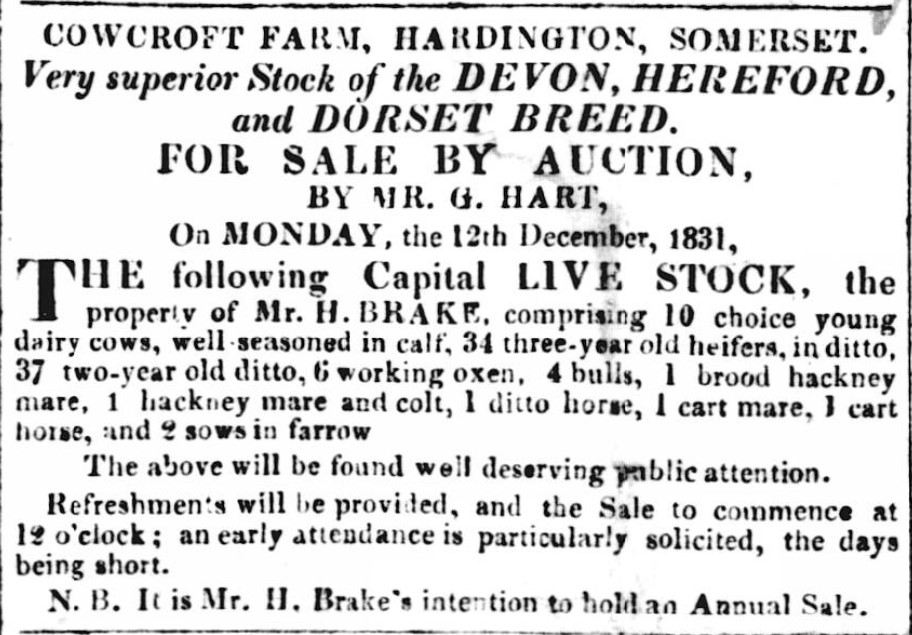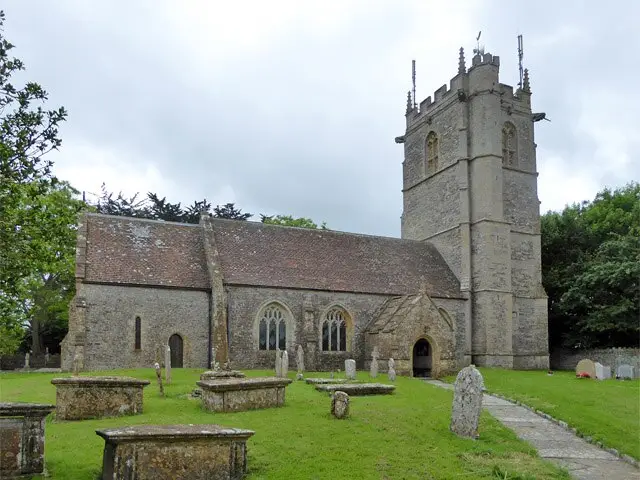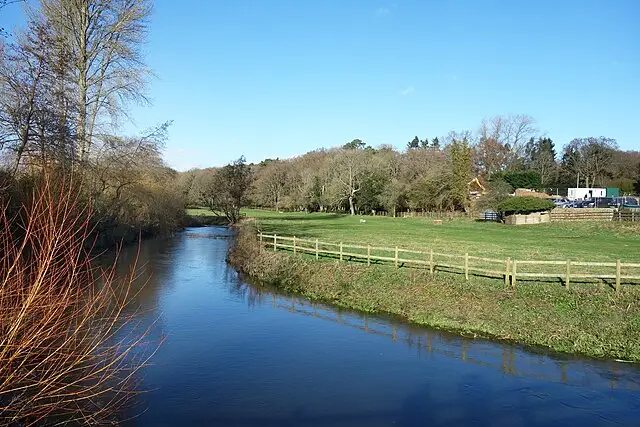Introduction
Henry Brake was the tenant of Cowcroft Farm from about 1830 to 1852, succeeding his younger brother, David Brake. Henry ran the farm in conjunction with Closworth Farm, Closworth, where he lived. He and his family did not move to Cowcroft until about 1849. In 1852, he was compelled to sell his livestock and equipment to satisfy debts. Following this, he and his family relocated to Tilford, near Farnham, to start anew. There, his youngest son made a fortune as an auctioneer and property developer.
Birth
Henry was born on 21 October 1786 at Francombe, Ryme Intrinseca, the sixth child of John and Elizabeth Brake .[1] His father, John, was a yeoman.
Move to Closworth
When Henry was about twenty-one, he moved to Weston Farm, Closworth.[2] His father partly financed this move by lending him £294.[3]
Marriage
On Christmas Eve, 1811, Henry married Mary Guppy, the daughter of James and Susannah Guppy, at Melbury Osmond.
Inheritance
Henry inherited a portion of his parents’ property following the death of his mother in March 1827. He and his nine siblings inherited an equal share in the residue of his father’s estate.[4] He also inherited a legacy of £20 from his mother.[5]
Life at Closworth
By 1832, Henry was the tenant of Closworth Farm.[6] The 1838 tithe survey of Closworth shows Henry occupying 135 acres.
On 5 April 1832, Henry’s eldest daughter, Harriet, married John Swaffield of Hardington at Closworth.
On Thursday, 16 November 1837, the newly-formed Closworth Agricultural Society held its first annual ploughing match in one of Henry’s fields at Closworth. At four o’clock in the afternoon, supporters and committee members, including Henry as treasurer, sat down to a public dinner at the Quite Woman, Halstock.[7]
The 1841 census shows Henry living at Closworth with his wife, son John, daughter Mary, and granddaughter Ellen Brake Swaffield. Thomas Thompson, a twenty-five-year-old farmer, also formed part of Henry’s household.
Henry was elected the poor law guardian for Closworth every year from 1843 to 1848.[8]
A Sunday morning blaze
On the morning of Sunday, 5 July 1846, as a service was in progress in the parish church, a lightning bolt struck Henry’s thatched dairy house at Closworth, causing a fire. Several of Henry’s labourers were resting inside the dairy house at the time, and one of them, a blind man, heard the lightning and smelt the fire. He quickly alerted the other men who evacuated the building. Henry, who was in his farmhouse nearby, soon became aware of the danger and rushed to the church for help. In response to his plea, every churchgoer hastened to the farm and did their best to move objects and livestock to minimise the damage. Four railway labourers who saw the fire as they passed along the road joined in and played a crucial role in directing the fire-fighting efforts. Although the fire ultimately destroyed the dairy house, adjacent outbuildings and implements, the outcome could have been much worse. Henry’s loss was uninsured but limited to haymaking machinery, other implements, and sheep cribs.[9] Lord Portman or his insurers would have borne the cost of replacing the buildings.
Cowcroft Farm, Hardington
In about 1830, William took on the tenancy of Cowcroft Farm, Hardington, in addition to Closworth Farm.[10] The previous tenant was his younger brother, David Brake, who moved to Chedzoy.
On 12 December 1831, Henry held a sale at the farm, selling a significant portion of his livestock. Although the newspaper advertisement stated that he planned to have an annual sale, the real purpose was probably to pay off his brother.[11]
The 1843 tithe survey of Hardington shows Henry occupying 313 acres owned by Lord Ilchester and 14 acres owned by himself.
In a court case of March 1860, he testified about how he had travelled between the two farms:
“Whilst occupying the two farms, he went from one to the other along Isle Lane. Had gone through with waggons and carts, and with a gig scores of times. In going from the east to Crewkerne Market and Fair, which he attended very often, he went through Isle Lane.”[12]
In 1843, 1844 and 1847, Henry attended and sang songs at the annual tenants’ dinner at Hardington.[13]
Residence at Cowcroft Farm
In about 1849, Henry and his family moved to Cowcroft Farm, Hardington.
The 1851 census shows Henry living there with his wife, son, daughter, and three farm servants (Robert Bartlett, Sarah Saunders and her sister, Selina Saunders). At that time, Henry farmed 326 acres and employed 13 labourers.
By 1852, Henry faced financial difficulties. On 18 November 1852, the Sheriff of Somerset ordered the sale of his live and dead stock at Cowcroft.[14]
Later life
In March 1860, Henry gave evidence at the court case concerning the legal status of Isles Lane, East Coker. He said he had left the neighbourhood four or five years earlier and was then living in Newbury, Berkshire.[15]
The 1871 census shows Henry and Mary living at Tilford near Farnham with their niece, Mary Guppy, living with them as their housekeeper.
Death
Mary died in February 1873, aged 81. Henry died in February 1876, aged 89.[16] They were both laid to rest at Farnham.
Children
Henry and Mary had three sons and five daughters. Their second son died in infancy.
Their son with the Midas touch
Their third son, Henry Jesty Ellis Brake, thrived as an auctioneer and property developer. He started by buying large amounts of land in Farnborough when it was still just a hamlet and laying out the streets for future development. He then spread further afield, making a fortune from a scheme that allowed working people to buy land by making an initial deposit and paying the balance in easy instalments.[17] When he died in 1905, he left an estate valued at £175,558 18s 6d (or £27 million in 2024 values).
References
[1] Taunton Courier and Western Advertiser, 28 March 1860, p.5.
[2] Taunton Courier and Western Advertiser, 28 March 1860, p.5.
[3] The will of John Brake, dated 2 October 1811, proved in London on 22 July 1812.
[4] The will of John Brake, dated 2 October 1811, proved in London on 22 July 1812.
[5] The will of Elizabeth Brake, dated 28 July 1825, proved in London on 3 April 1827.
[6] Closworth voters’ list of 1834.
[7] Sherborne Mercury, 27 November 1837, p.3.
[8] Sherborne Mercury, 15 April 1843, p.4; 6 April 1844, p.3; 19 April 1845, p.3; 18 April 1846, p.3; 3 April 1847, p.3; 22 April 1848, p.3.
[9] Sherborne Mercury, 11 July 1846, p.3; Dorset County Chronicle, 9 July 1846, p.3 and p.4.
[10] Taunton Courier and Western Advertiser, 28 March 1860, p.5.
[11] Dorset County Chronicle, 8 December 1831, p.1; Sherborne Mercury, 6 January 1844, p.3; Sherborne Mercury, 4 January 1845, p.3; Sherborne Mercury, 9 January 1847, p.3.
[12] Taunton Courier and Western Advertiser, 28 March 1860, p.5.
[13] Dorset County Chronicle, 19 January 1843, p.4;
[14] Sherborne Mercury, 16 November 1852, p.2.
[15] Taunton Courier and Western Advertiser, 28 March 1860, p.5.
[16] The Civil Registration Death Index gives Henry’s age as 88.
[17] Surrey Advertiser, 23 September 1905, p.7



